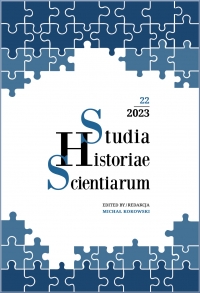The Misrepresentation of Petri Dish, as “petri” Dish, in the Scientific Literature
The Misrepresentation of Petri Dish, as “petri” Dish, in the Scientific Literature
Author(s): Jaime A. Teixeira da SilvaSubject(s): History, Social Sciences, Education, Sociology, Local History / Microhistory, History of Education
Published by: Wydawnictwo Uniwersytetu Jagiellońskiego
Keywords: Petri dish; “petri” dish; basic and applied biology; cell; tissue and organ culture; microbiology; synthetic meat
Summary/Abstract: The Petri dish is, without a doubt, a very basic, yet important and popular tool in microbiological and other biomedical experiments. It serves primarily as a support or structural platform for placing, growing or testing biological specimens, whether these be microbiological, animal, plant or human.Given its size, usually about 10 cm in diameter, the Petri dish is an ideal platform for cellular and tissue cultures.Despite the commonality of Petri dishes, quite surprisingly, there is a pervasive error throughout the biomedical literature, namely its misspelling as “petri” dish. This is not a trivial issue since this dish is named after a scientist, Julius Richard Petri (1852–1921), so the upper-case “P” should not be represented as a lower-case “p”.It is important to alert students and seasoned biomedical researchers, as well as the wider public, who might use this term, about the need to use the term Petri accurately, in order to respect its historical foundation.To garner some appreciation of the extent of this error in the biomedical literature, a 2022 search on PubMed for either “Petri dish” or “petri dish” revealed 50 search results, 24 (or 48%) of which were of the latter, erroneous form in titles or abstracts. This suggests that the indicated error, which is in need of correction, may be widely pervasive in the biomedical literature.
Journal: Studia Historiae Scientiarum
- Issue Year: 2023
- Issue No: 22
- Page Range: 611-626
- Page Count: 16
- Language: English

